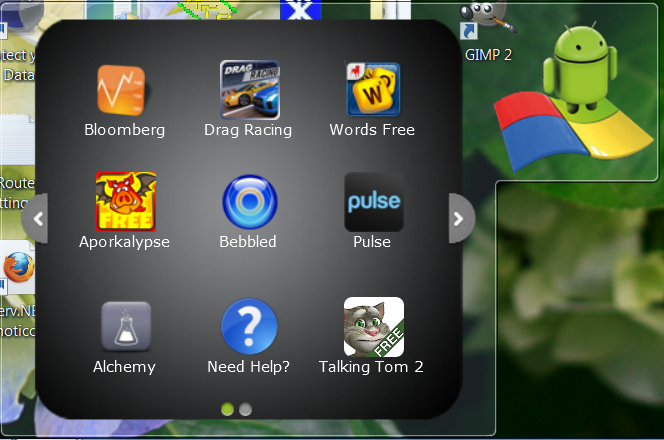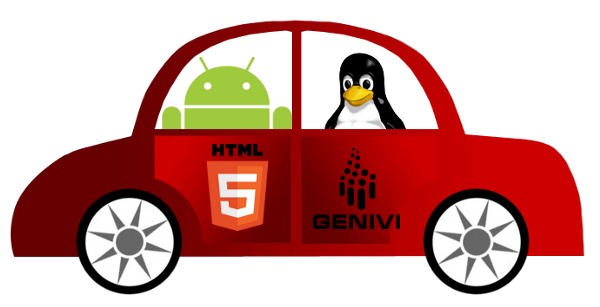Bluestacks has released an Alpha version of its App Player for Windows 7. This sotware allows you to run Android apps inside Windows 7. I’ve tried to install it in Windows XP but it won’t work and here’s the reason: So Bluestack App Player is a Windows 7 gadget, so it would obviously not work in Windows XP. If you want Windows XP, you do not need to despair as you can still run Android-x86 in a virtual machine (The post is a bit old, Android 2.3 is now available). Of course, this is not as neat and fast as Bluestacks application. There are 10 applications pre-installed. I’ve tried Bloomberg app and it works very well. If you need more apps, you can visit Bluestacks Channel and add up to 16 extra applications. The pro-version will not have this limitation and will allow users to install premium apps such a […]
Get CFLAGS for a Package with pkg-config
As I tried to cross-compile an application that required glibconfig.h, I found a way to retrieve the CFLAGS for a given package. Here’s the output for glib-2.0 and gtk-2.0 in qemu for overo: pkg-config –cflags glib-2.0 -I/usr/include/glib-2.0 -I/usr/lib/arm-linux-gnueabi/glib-2.0/include pkg-config –cflags gdk-2.0 -pthread -I/usr/include/gio-unix-2.0/ -I/usr/include/pango-1.0 -I/usr/include/glib-2.0 -I/usr/lib/arm-linux-gnueabi/glib-2.0/include -I/usr/include/freetype2 -I/usr/include/libpng12 -I/usr/include/gtk-2.0 -I/usr/lib/gtk-2.0/include -I/usr/include/cairo -I/usr/include/gdk-pixbuf-2.0 -I/usr/include/pixman-1 Finally, I found out that glibconfig,h was in /usr/lib/arm-linux-gnueabi/glib-2.0/include as this file is generated by configure and is platform dependent.
New Android 2.3.4 Release For ST Ericsson Snowball Development Board
Igloo Community – the team developing for ST Ericsson Snowball Nova A9500 development board – has released the second version of Android 2.3.4 for the board. It can be downloaded at http://igloocommunity.org/download/android/images/20111012/ for V3 and V5 boards. Here are the new features and main bug fixes for this release: GPS support enabled WiFi instabilities fixed and enabled in the UI The browser home page crash is gone and the known issues: Audio recording does not work Potrait mode does not work (rotating the device corrupts screen until rotated back) The phone app crashes (no modem support) The flashing instructions are available at http://www.igloocommunity.org/support/Flashing_howto
Generate a Custom ARM Rootfs Easily with Rootstock
You may need to generate your own rootfs for your ARM target board, but do not want to cross-compile all libraries manually. You can achieve this with rootstock, a utility that generates Ubuntu armel rootfs tarballs and/or qemu image, to be uncompressed onto a root device. First install roostock: sudo apt-get install rootstock Then generate a rootfs with the required libraries: sudo rootstock –fqdn beagleboard –login cnxsoft –password temppasswd \ –imagesize 3G –seed xfce4,gdm,pkg-config,python,perl,g++,bison,flex,\ gperf,libnss3-dev,libgtk2.0-dev,libnspr4-0d,libasound2-dev,libnspr4-dev,\ libgconf2-dev,libcairo2-dev,libdbus-1-dev,libstdc++6-4.5-dev,libexpat1-dev,\ libxslt1-dev,libxml2-dev,libbz2-dev –dist natty Here are the details of the command line parameters: –fqdn: Hostname to be used for the target system –login: Login ID of the admin user created during setup –password: Password of the admin user created during setup –imagesize: Size of the target filesystem to be created (default 1GB) –seed: List of packages to install –dist: Specify Release to build (jaunty, karmic, lucid, maverick or natty) Alternatively you could also use an […]
MontaVista adds HTML5 and Android support to its GENIVI-Compliant Automotive Technology Platform
Montavista announced secure HTML5 and Android support to its Automotive Technology Platform (ATP) which is GENIVI Compliant. HTML5 support is provided via MontaVista’s ModiiTM Digital Media Solutions Platform. Both Android and HTML5 are made independant of critical part of the software as they are executed in a MontaVista Linux Container (isolated virtualized container environment). Here’s an excerpt of the press release: SANTA CLARA, Calif. – October 10th, 2011 – MontaVista® Software LLC, today announced secure HTML5 and Android support for its Automotive Technology Platform (ATP). The addition of HTML5 support is provided via MontaVista’s ModiiTM Digital Media Solutions Platform which adds a powerful HTML5-based UI Framework to its recently released GENIVI-Compliant Platform. The Android support delivers a high performance Android runtime environment, which opens up access to a vast number of popular applications from the entire Android ecosystem. Complementing the Android and HTML5 capabilities, MontaVista has implemented a unique dual-layered […]
CyanogenMod 7.1 Android Released
CyanogenMod Team has just released CyanogenMod 7.1 based on Android 2.3.7. The previous version (7.0.3) was released on the 6th of May 2011. CyanogenMod 7.1 Changelog Common: Android 2.3.7 (Google) Common: Bluetooth mouse support – Scott Brady Common: Improve notification swipe-to-clear – Evan Charlton Common: Improve album-artist support in media scanner – Paul Crovella Common: Profile improvements and bugfixes – Martin Long, Danny Baumann, Robert Burns Common: RTL text improvements – Eyad Aboulouz, Eran Mizrahi Common: Wake on volume key option – Sven Dawitz Common: Support for revoking application permissions – Plamen K. Kosseff Common: Latest Superuser app – ChainsDD Common: Control brightness by sliding on statusbar – Danesh M Common: Add “copy all” to context menu – Danesh M Common: Lockscreen haptic and statusbar indicators toggle – Danesh M Common: Nicer timepicker/datepicker – Jiri Tyr Common: Configuration 0/90/180/270 rotation – Jonas Larsson, Scott Brady Common: DSP Manager bugfixes and […]
Web Servers for Embedded Systems
Many network-enabled embedded devices do not have displays and configuration must be done via a webpage. This is the case for modems and routers and possibly for IP cameras, networked printers… With a web server, there is no need to develop specific drivers and/or applications for computers connected to the device. You just need to write HTML/Javascript pages and possibly CGI scripts. I’ve already posted a blog post about mathopd for ARM no-mmu targets as this HTTP server is ideal for uCLinux since it does not fork. Today, I’ll list some other HTTP servers that may also be used with embedded processors. Tiny/Turbo/Throttling HTTP server thttpd is a lightweight HTTP server implementing the HTTP/1.1 (minimum) and simple to configure and run. Its executable size is 88K. The description says it does not fork, but fork is called in the source code, so I do not know what that means… It’s […]
Open Source Licenses Overview: GPL, LGPL, Apache, BSD,…
The great thing about open source code is the large amount of high quality code that is available and many embedded projects use FOSS code as it really speeds up development time. What is not often taken into account are the licenses for the code. Many companies often simply ignore licenses issues and some even go one step further by obfuscating the code to work around dual license issues or to hide the use of a particular open source library. Even though history shows that few companies get sued due to open source license infringements and release of open source code modified in commercial projects often requires the community involvement, open source licenses should still be taken into consideration as the risk still exists. I’ll give an overview of open source licenses in this blog post, as well as recommendation on how to keep your proprietary code closed. Definition of […]











